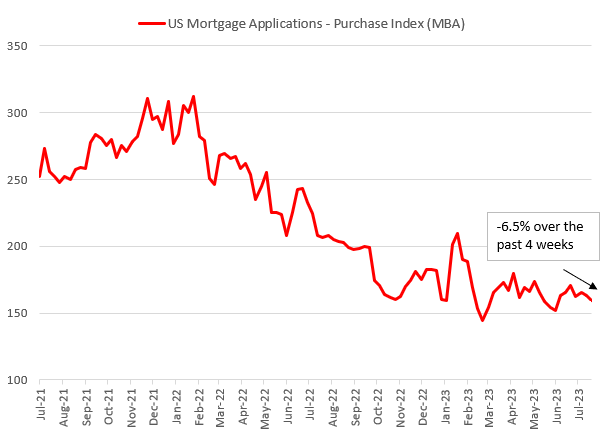Navigating The Chinese Market: The Struggles Faced By BMW, Porsche, And Other Automakers

Table of Contents
Intense Domestic Competition
The Chinese automotive market is fiercely competitive, and international luxury brands face significant pressure from rapidly growing domestic players.
Rise of Local Brands
The rise of domestic Chinese auto brands like Geely, BYD, and Nio represents a major challenge. These brands are aggressively challenging established players by offering:
- Aggressive pricing strategies: Local brands often undercut international competitors, making their vehicles more accessible to a wider range of Chinese consumers. This price competitiveness is a key factor in their market share growth.
- Rapid technological advancements in local EVs and hybrids: Chinese automakers are investing heavily in electric vehicle (EV) and hybrid technology, often surpassing international competitors in certain areas of innovation. This technological leap is attracting environmentally conscious and tech-savvy consumers.
- Growing consumer preference for domestic brands due to patriotism and cost-effectiveness: National pride plays a significant role in consumer choices. Many Chinese consumers actively prefer domestic brands, driven by a sense of patriotism and the value proposition offered.
- Effective marketing campaigns targeted specifically at Chinese consumers: Local brands demonstrate a superior understanding of Chinese consumer preferences, leading to more effective marketing campaigns that resonate deeply.
Joint Venture Hurdles
Many international automakers enter the Chinese market through joint ventures with local partners. While this approach offers access to local expertise and resources, it also presents challenges:
- Challenges in maintaining brand control and consistent quality standards: Shared decision-making can sometimes compromise brand control and lead to inconsistencies in quality across different models.
- Difficulty in swiftly adapting to market changes due to shared decision-making processes: Bureaucratic hurdles and the need for consensus can slow down the response to changing market demands.
- Potential for conflicts of interest between partners: Differences in business philosophies and strategic objectives can lead to internal conflicts that hinder progress.
- Profit sharing arrangements that can impact overall profitability: Profit sharing structures might not always be optimally aligned with the international automaker's goals, impacting overall return on investment.
Understanding Unique Consumer Preferences
Success in the Chinese market hinges on a deep understanding of the unique preferences and demands of Chinese consumers.
Evolving Consumer Demands
Chinese consumers are becoming increasingly sophisticated and demanding. They expect:
- Preference for electric and hybrid vehicles: Environmental concerns and government incentives are driving a strong demand for new energy vehicles (NEVs).
- Demand for advanced driver-assistance systems (ADAS): Chinese consumers are tech-savvy and appreciate advanced safety and convenience features.
- Importance of online and digital marketing strategies: Digital marketing channels play a crucial role in reaching and engaging Chinese consumers. A strong online presence is essential.
- Focus on personalized customer service and after-sales support: Providing exceptional customer service is vital for building brand loyalty and positive word-of-mouth referrals.
Regional Variations
China's vast geographical expanse and diverse regional cultures mean consumer preferences vary significantly. Strategies need to be tailored to:
- Differences in income levels and purchasing power across provinces: Marketing and product offerings need to be adjusted to reflect varying purchasing power across different regions.
- Varying preferences for vehicle types and features based on regional culture: Understanding local cultural nuances is crucial for designing appealing products and marketing messages.
- Importance of localized marketing campaigns to resonate with regional audiences: Using local dialects, cultural references, and regionally relevant marketing channels improves campaign effectiveness.
- Adapting supply chains to efficiently serve different regions: Efficient logistics and supply chain management are crucial for timely delivery across the vast Chinese territory.
Navigating Regulatory and Political Landscape
The Chinese automotive market is heavily regulated, and geopolitical factors also play a significant role.
Stringent Regulations
Compliance with China's stringent regulations is paramount for success. These include:
- Ever-changing emission standards requiring constant adaptation: Automakers must continuously invest in R&D to meet evolving emission regulations.
- Complex regulatory processes for vehicle homologation: Navigating the complexities of vehicle type approval processes is crucial.
- Tariffs and import duties that impact pricing and profitability: Understanding and managing import duties is essential for maintaining profitability.
- Navigating government incentives and subsidies: Leveraging government incentives for NEVs and other technologies can enhance competitiveness.
Geopolitical Factors
Geopolitical developments significantly impact the Chinese automotive industry:
- Impact of trade wars and sanctions: International trade tensions can disrupt supply chains and affect market access.
- Influence of government policies on foreign investment: Government policies regarding foreign investment can create both opportunities and challenges.
- Managing supply chain disruptions due to geopolitical uncertainty: Building resilient and diversified supply chains helps mitigate geopolitical risks.
- Maintaining a positive public image amidst political sensitivity: Maintaining a positive public profile is essential for navigating the sensitive political landscape.
Conclusion
The Chinese market presents unparalleled opportunities for growth, but success requires navigating a complex interplay of domestic competition, evolving consumer preferences, and stringent regulations. Luxury automakers like BMW and Porsche must develop deep cultural understanding and agile strategies to thrive. By focusing on localized product offerings, strong partnerships, and responsive adaptation to market shifts, these brands can overcome challenges and secure a robust position in this crucial market. To learn more about effectively navigating the intricacies of the Chinese market, and optimizing strategies for the China automotive market, continue researching best practices and adapting to the ever-changing environment.

Featured Posts
-
 Levenslang Voor Fouad L Waarom Geen Tbs
May 01, 2025
Levenslang Voor Fouad L Waarom Geen Tbs
May 01, 2025 -
 Northumberland Sailor Embarks On Round The World Trip In Homemade Vessel
May 01, 2025
Northumberland Sailor Embarks On Round The World Trip In Homemade Vessel
May 01, 2025 -
 Post Election Analysis Mark Carney And The Liberal Partys Win In Canada
May 01, 2025
Post Election Analysis Mark Carney And The Liberal Partys Win In Canada
May 01, 2025 -
 Cassidy Hutchinson Memoir A Deep Dive Into The January 6th Hearings
May 01, 2025
Cassidy Hutchinson Memoir A Deep Dive Into The January 6th Hearings
May 01, 2025 -
 Extreme V Mware Cost Increase At And Ts Response To Broadcoms Proposal
May 01, 2025
Extreme V Mware Cost Increase At And Ts Response To Broadcoms Proposal
May 01, 2025
Latest Posts
-
 Global Defense Budgets Soar Amidst Growing Russian Threat
May 01, 2025
Global Defense Budgets Soar Amidst Growing Russian Threat
May 01, 2025 -
 Cruise Ship Innovations Whats New For 2025
May 01, 2025
Cruise Ship Innovations Whats New For 2025
May 01, 2025 -
 The Best New Cruises Departing From Southern Ports In 2025
May 01, 2025
The Best New Cruises Departing From Southern Ports In 2025
May 01, 2025 -
 Nclh Stock Is It Worth The Investment According To Hedge Funds
May 01, 2025
Nclh Stock Is It Worth The Investment According To Hedge Funds
May 01, 2025 -
 New Cruise Ships Of 2025 The Big Deal
May 01, 2025
New Cruise Ships Of 2025 The Big Deal
May 01, 2025
